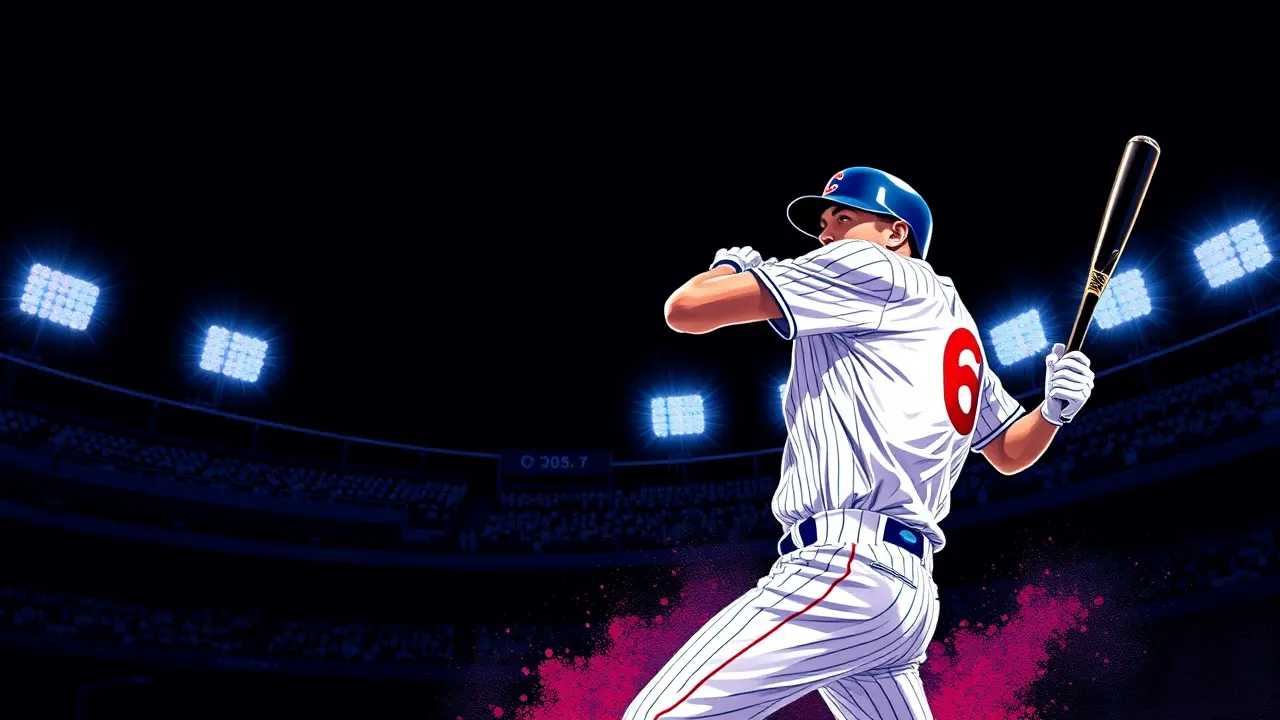Kyle Tucker's decision looms large as Cubs look toward future after making playoffs
CHICAGO — The Chicago Cubs' season, a thrilling return to October baseball that culminated in a hard-fought NLDS exit against the rival Brewers, now pivots to an offseason defined by a single, monumental question: the future of Kyle Tucker. Cubs president of baseball operations Jed Hoyer, in his season-ending reflections, was unequivocal about the outfielder's impact, stating the team operated at its peak when Tucker was at his.This isn't just a routine postseason debrief; it’s the opening gambit in a high-stakes negotiation that will shape the franchise's trajectory for years. Tucker, acquired in a transformative offseason trade with the Houston Astros, is now the crown jewel of the impending free-agent class, a four-time All-Star whose market will be as fierce as a pennant race.Hoyer’s public acknowledgment that 'everyone can use a guy like Kyle Tucker' was less a casual observation and more a declaration of intent, a signal to the league and the Wrigley Field faithful that the Cubs plan to be serious players in the ensuing bidding war, a contest that will test the financial mettle of owner Tom Ricketts. The parallels to franchise-altering signings of the past are unavoidable, evoking the ghost of players like Alfonso Soriano, whose own massive deal once signaled a new era.Tucker’s 2025 campaign was a tale of two halves and two ballparks, a. 266 average with 22 homers and 91 runs scored belying a significant home-road split; he was a.292 force with 15 long balls away from the Friendly Confines, but managed a comparatively tame. 236 with just seven homers within them, a statistical quirk that front offices will dissect relentlessly.His value, however, transcends the box score. His presence in the lineup provided crucial protection for emerging sluggers like Michael Busch and Seiya Suzuki, while his veteran savvy dovetailed perfectly with the electrifying emergence of All-Star Pete Crow-Armstrong, creating a defensive outfield that was among the league's elite.This synergy was the engine of a 92-win team, the Cubs' highest victory total since 2018, a group that Hoyer rightly praised for its cohesion and resilience after battling back from an 0-2 NLDS deficit before ultimately falling. Should Tucker depart, the contingency plans are already a topic of fervent speculation.A nostalgic reunion with Kyle Schwarber, the beloved 2016 champion, presents one powerful, emotion-laden path. Alternatively, the organization could fully commit to its youth movement, handing the keys to top prospects like Owen Caissie and Moises Ballesteros, a riskier proposition that aligns with a longer-term build.Yet, the Tucker dilemma is merely the headline act in a complex offseason drama. An equally pivotal decision awaits on the club option for Japanese left-hander Shota Imanaga.After a stellar rookie All-Star campaign in 2024 where he went 15-3 with a 2. 91 ERA, Imanaga’s 2025 was marred by a strained left hamstring and a troubling propensity for the home run ball, culminating in a 9-8 record, a 3.73 ERA, and a disastrous playoff performance featuring an 8. 10 ERA across two starts.Exercising his option for 2028 is no longer the automatic yes it once seemed; it’s a complex calculus weighing his undeniable 'great teammate' persona and previous excellence against recent vulnerability and age. The rotation's need for another arm is acute, especially with 2023 All-Star Justin Steele's season erased by elbow surgery, a stark reminder of pitching's fragility.Hoyer’s defense of his trade deadline inactivity on the pitching front—citing the prohibitive cost of impact arms—will be judged by his actions this winter. The financial landscape is the final, crucial variable.Hoyer has expressed confidence in having the 'resources to field a good team,' but the true budget remains a mystery until he sits down with ownership. The Cubs are at a crossroads, reminiscent of the 2014 offseason that set the stage for their historic 2016 World Series run.Securing Tucker would be a statement of intent, a commitment to sustained contention in a competitive NL Central. Losing him would force a recalibration, a test of the organization's depth and developmental prowess. The decision on Tucker doesn't just loom large; it is the very fulcrum upon which the future of the Chicago Cubs will balance.
Latest News
The charts are whispering what the true believers have felt in their bones for weeks—Dogecoin is carving out a bottom.
17 hours ago5 comments
The Institute for Fiscal Studies has thrown a stark warning onto Rachel Reeves's desk, urging the Chancellor to confront a potential £22 billion shortfall in
17 hours ago3 comments
Alright, let's break down this absolute heater of a performance from the Chicago Blackhawks, because if you missed this one, you missed a party.
18 hours ago5 comments
The ice was hot last night in the NHL, folks, serving up a slate of games that felt less like a regular season Tuesday and more like a playoff preview with a
18 hours ago3 comments
The XRP chart is painting a tantalizing picture for those with the stomach to withstand the relentless pressure from crypto's leviathans.
18 hours ago4 comments
It’s in the small shifts, the quiet recalibrations of a Thursday morning, where the most meaningful change often takes root.
18 hours ago4 comments
In a move that sent ripples of quiet confidence through the crypto ecosystem, blockchain intelligence firms tracked a monumental treasury allocation from
18 hours ago4 comments
In a move that would have drawn a nod of approval from historical figures like Churchill, who understood the delicate balance of power within democratic
18 hours ago2 comments
JA
Jamie Lopez123k12 hours ago
tbh the home/road split for tucker is kinda worrying idk if we should break the bank for that
0
JA
Jamie Larson123k15 hours ago
major development for the cubs tbh idk if they can afford him smh
0
JA
Jamie Larson123k24 hours ago
wow they're really about to spend a billion dollars on a guy while i'm over here struggling to afford a hot dog at the ballpark smh
0
